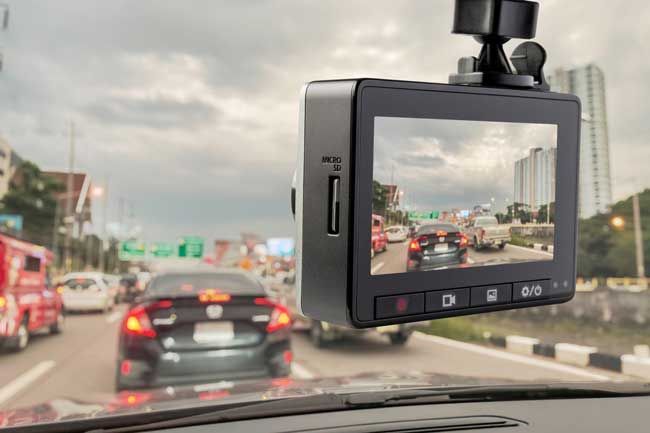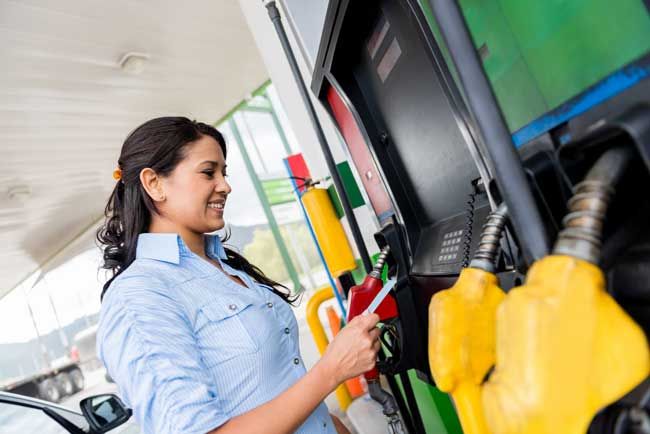
Fleet managers use various management tools to help protect their fleet. These may focus on financial security or help protect physical assets like fleet vehicles. Two specific tools offer powerful, comprehensive protection when used together: fleet cards and in-dash cams. While seeming unrelated, these two fleet management solutions cast a wide net of safety, helping protect your finances, vehicles and drivers.
The Function of a Fleet Card
Fleet cards are a specialized payment method for businesses operating a vehicle fleet. Trucking companies can use these cards to pay for fuel, maintenance and other vehicle-related expenses. Some fleet cards offer discounts on fuel, and all are ideal for consolidating expenses. Beyond being an ideal payment method, fleet cards offer a host of benefits to fleet managers.
Real-time Data Tracking
Every purchase made with a fleet card is tracked in real time. This means fleet managers have immediate access to all transaction data.
Spending Controls
Fleet managers can program fleet cards with customized spending limits, ensuring cards are used only for company-approved expenses.
Detailed Reporting
Fleet cards come with a fleet card dashboard where all data is recorded. Business owners and fleet managers can generate detailed reports from these dashboards.
Automated Fuel Expense Tracking
Since all transactions are recorded in real time, there is no need to track receipts or submit expense reports. A fleet card does this work for your drivers and your accounting department.
What is an In-dash Camera?
In-dash cameras, or dash cams, are small video recording devices. These are usually mounted on the dashboard or windshield of a vehicle. In-dash cameras continuously record the road and surrounding environment. Dash cams can be used to record a vehicle’s exterior or a cab’s interior.
Using Fleet Cards and In-dash Cams Together
In-dash cams and fleet cards provide video footage correlating with fleet card data. Here are five reasons to consider using dash cams and fleet cards together.
Accident Documentation
Accidents can result in injury, disrupt operations and lead to potential legal and financial repercussions. In-dash cameras provide real-time, continuous recording, capturing critical moments leading up to and following an accident. This documentation can prove invaluable in determining fault and liability and may reduce legal disputes and associated costs. Here are a few benefits of in-dash cameras in relation to accidents:
- Unbiased record: In-dash cams provide a factual account of what happened, making determining who was at fault during an accident easier.
- Faster claims processing: Faster claims processing: With a clear record of the event, insurance companies can process claims more swiftly, meaning fewer delays and reduced downtime for your fleet.
- Legal protection: Video evidence can protect your company from fraudulent claims and may reduce legal fees and settlements.
Fleet card data is also valuable in the case of an accident. Real-time data can determine when and where a driver and vehicle were before an accident which may help with an investigation. Fleet cards can also be used to assist with record keeping regarding maintenance. Should an accident be attributed to the condition of a vehicle, fleet managers have a complete record of services and maintenance.
A fleet card is also an ideal way to pay for and track expenses related to an accident.
Monitoring Driver Behavior
When used together, video footage from dash cams and driver data from a fleet card provide a complete view of a driver’s actions and associated expenses. This helps identify patterns, correlate incidents with fuel consumption, and make data-driven decisions to optimize both safety and operational costs.
When used together, video footage from dash cams and driver data from a fleet card provide a comprehensive view of driver actions and associated expenses.
Here are a few ways fleet cards and dash cams benefit your drivers:
- Increase safety: With a clear view of the road and driver, fleet managers can ensure drivers adhere to safety regulations or company policies.
- Training opportunities: Footage from in-dash cams and fleet card data help highlight questionable driving habits or high fuel consumption — both of which can be addressed with driver training.
- Reward programs: Incentivize good driving by creating a scorecard. The metrics you measure can be based on camera footage and fleet card data (fuel consumption, attentive vs. inattentive driving, etc.)
Financial Savings
Fleet cards and dash cams offer savings in different ways. But when used together, both can reduce how much a fleet spends on fuel.
Monetary Savings

Many fleet cards offer discounts or savings on every gallon of fuel purchased. However, their ability to help reduce fuel spend extends far beyond savings at the gas station. With purchase controls, fleet cards help drivers adhere to fuel spending policies and can identify opportunities to reduce fuel consumption.
When you add a dash cam, drivers are more aware of their driving habits. This increased accountability promotes safer driving which leads to better fuel economy.
Also, many fuel cards include access to savings networks or special pricing on vehicle-related expenses such as tires, parts, services and maintenance.
Insurance Savings
Insurance premiums are a significant financial concern for fleet managers. Using fleet cards and in-dash cameras can lead to reduced insurance premiums in two ways:
- Promoting safe driving practices: Fleet cards and in-dash cams help encourage safer driving. While this does not directly impact insurance premiums, your drivers’ long-term safe driving records help fleet managers get lower insurance premiums.
- Insurance discounts: Some insurance companies offer discounts to fleets that use advanced safety technology like in-dash cams. Lower monthly premiums can lead to major long-term savings.
Fraud Prevention
Fleet cards are great for helping prevent fraudulent transactions, and in-dash cams protect trucking fleets against insurance fraud.
Fleet cards include advanced security features, such as PINs and spending limits, to help prevent unauthorized usage. Additionally, fleet cards can be set to flag or decline transactions that fall outside pre-set parameters, such as buying fuel in a location far from a vehicle’s route or transactions exceeding a specific purchase limit.
Fleet cards include advanced security features, such as PINs and spending limits, to help prevent unauthorized usage.
In-dash cameras help address a different kind of fraud. Staged accidents and false claims are increasingly common. Dash cams help protect drivers from fraudulent activities. With an objective video record of events, you can expose false claims.
Just the presence of a dash cam may deter would-be scammers because they know their actions will be recorded.
Theft Prevention
The same features protecting a fleet against fraudulent purchases also prevents theft. Purchase limits can signal that an unauthorized user is using a card. PINs ensure no one can use a card unless they know the secret PIN.
In the case of vehicle theft, in-dash cams are a great deterrent and an investigative tool:
- Deterrence: A prominently-displayed in-dash camera minimizes the risk of vehicle or cargo theft.
- Assist investigations: Footage from cameras can help in an investigation, increasing the chances of recovering stolen goods.
- Location tracking: Some in-dash cams are equipped with GPS functionality. This can help locate and recover stolen vehicles.
Protect Your Assets
In the trucking industry, every dollar counts. Safeguarding your financial and physical assets is critical. Using fleet cards with dash cams helps protect your finances, drivers and vehicles.
To find the perfect fleet card for your business, visit www.efsllc.com